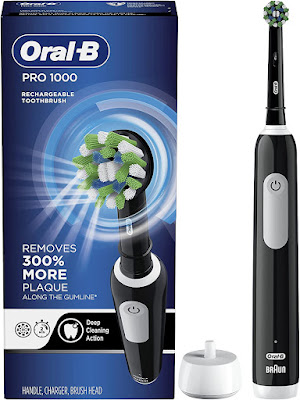PDF: Manual orthodontic vs. oscillating-rotating electric toothbrush in orthodontic patients: a randomised clinical trial
The aim of this randomised clinical trial was to compare the efficacy of the oscillating-rotating electric toothbrush and an orthodontic manual toothbrush in plaque removal and reduction of gingivitis in patients bearing fixed orthodontic appliances.
Conclusions regarding the plaque removal efficacy of electric toothbrushes vary widely. However, according to the Cochrane report, a review of 29 studies published between 1964 and 2001, with a total of 2547 participants [Penick, 2004], and its 2005 amendment [Robinson et al., 2005], oscillating-rotating toothbrushes are the only
powered toothbrushes that remove more plaque than their manual counterparts.
Likewise, Forrest [Forrest and Miller, 2004] found that only the oscillating-rotating toothbrush produced consistently higher and statistically significant reductions in plaque (7%) and gingivitis (17%), as compared to manual toothbrushes.
Deery et al. [2004] reported that using an electric toothbrush was as least as effective at reducing plaque and gingivitis as manual brushing, but only oscillatingrotating toothbrushes significantly reduced these parameters in the short and long term.
Furthermore, Hamerlynk et al. [2005] found that using an electric toothbrush with rotating-oscillating action for three months reduced the level of gingivitis and plaque, although statistical significance was not demonstrated for the latter.
Interestingly, this study also revealed that electric
toothbrushes without a rotating-oscillating movement were consistently inferior to manual toothbrushes.













Publicar un comentario